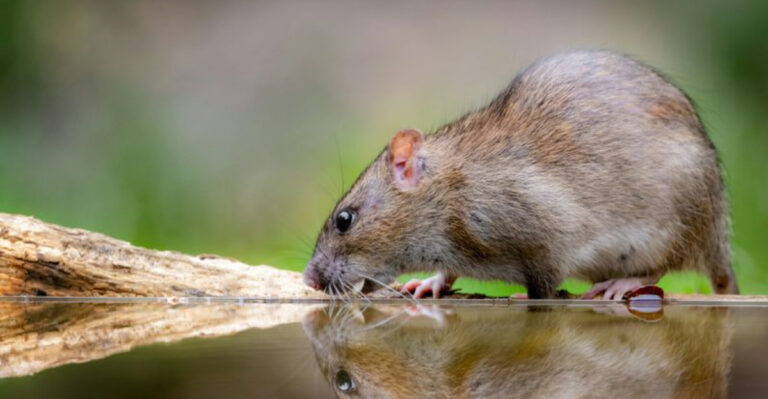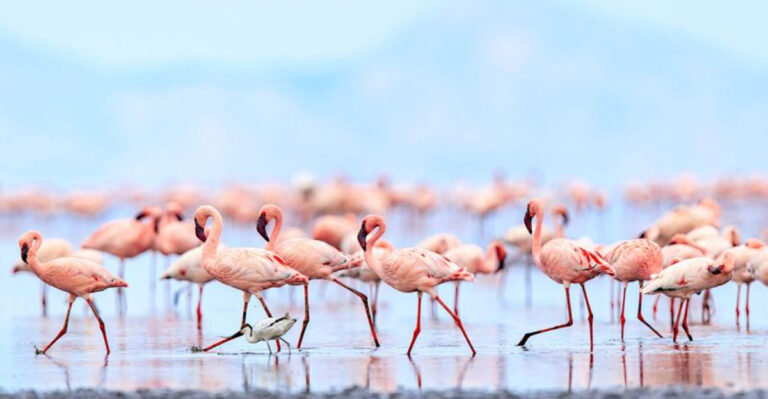9 Fascinating Animals That Resemble Raccoons
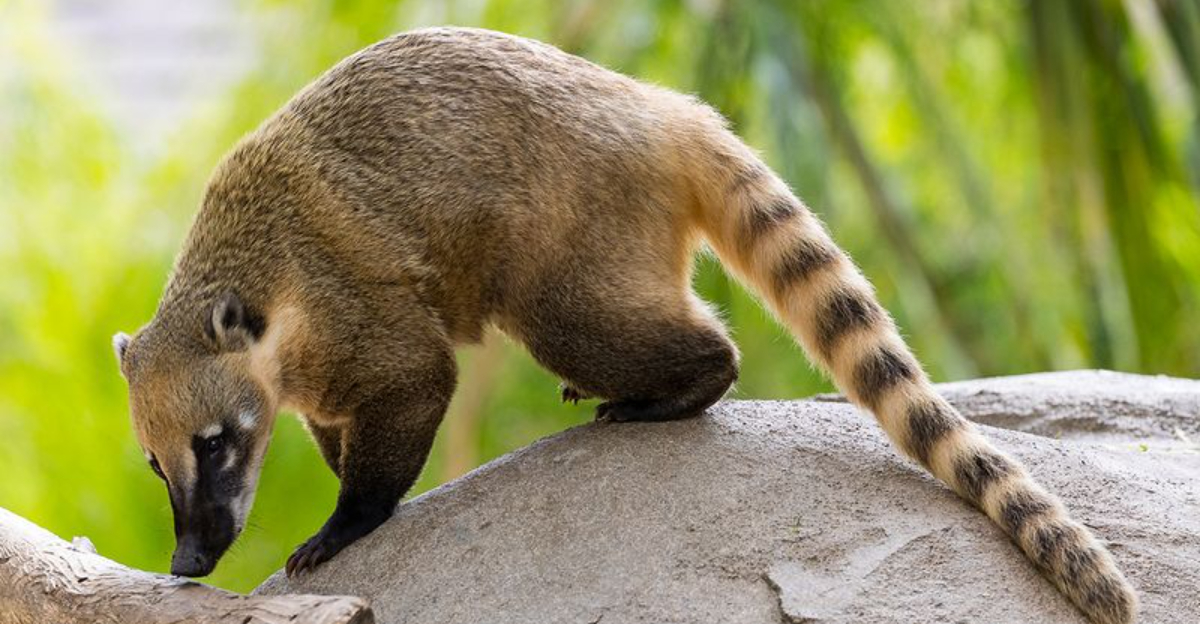
Raccoons are known for their distinctive appearance, with their masked faces and bushy tails, captivating nature enthusiasts worldwide.
However, they are not alone in the animal kingdom in terms of their charming features. Many creatures, from far-flung corners of the globe, bear a striking resemblance to raccoons.
Some are close relatives, while others simply share similar traits, creating a diverse array of animals that remind us of these iconic bandits. In this article, we explore such fascinating creatures, diving into their unique characteristics and the habitats they call home.
1. Coati
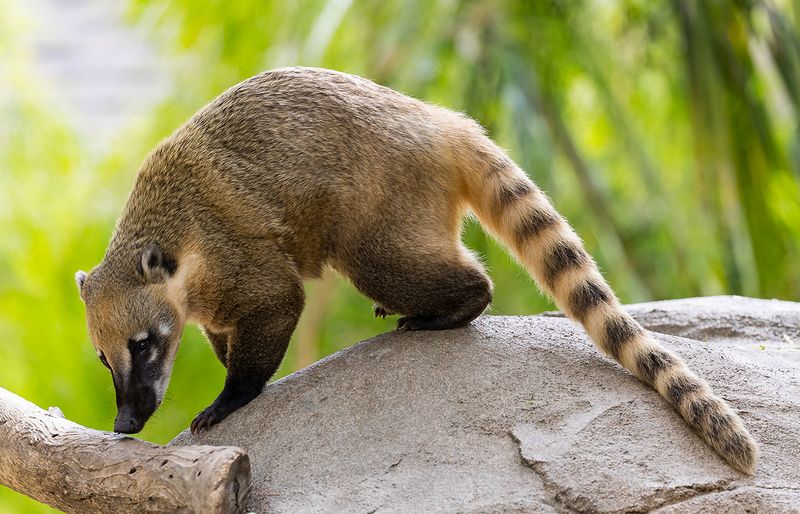
In the dense rainforests of Central America, a creature resembling a raccoon curiously navigates its vibrant world.
The Coati, known for its inquisitive nature, shares the raccoon’s distinctive mask and ringed tail. Unlike raccoons, coatis are more social, often seen in groups known as ‘bands,’ foraging on the forest floor.
Known scientifically as Nasua, these creatures possess elongated snouts that aid in sniffing out insects and small vertebrates, which form a significant part of their diet. Their nimble paws and sharp claws make them excellent climbers, navigating trees with ease.
The coati’s adaptability to various environments, from lowland rainforests to higher altitudes, showcases its resilience.
2. Kinkajou
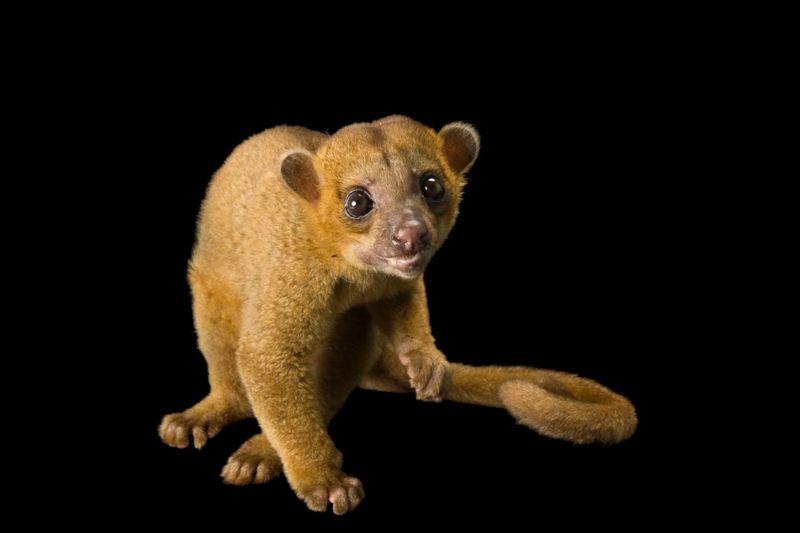
Deep within the tropical rainforests, a nocturnal creature thrives, often mistaken for a raccoon at first glance.
The Kinkajou, with its large, round eyes and prehensile tail, is perfectly adapted to its arboreal lifestyle. Unlike its distant raccoon relatives, this creature is more akin to lemurs and shares a family with olingos.
The kinkajou’s golden fur glistens under the moonlight as it navigates the treetops, feeding on fruits and nectar. Its long tongue aids in accessing nectar deep within flowers, playing a crucial role in the ecosystem as a pollinator.
Despite their cuddly appearance, kinkajous are wild animals and can be quite territorial. They communicate through a series of vocalizations, keeping in touch with fellow kinkajous in the area.
3. Ringtail
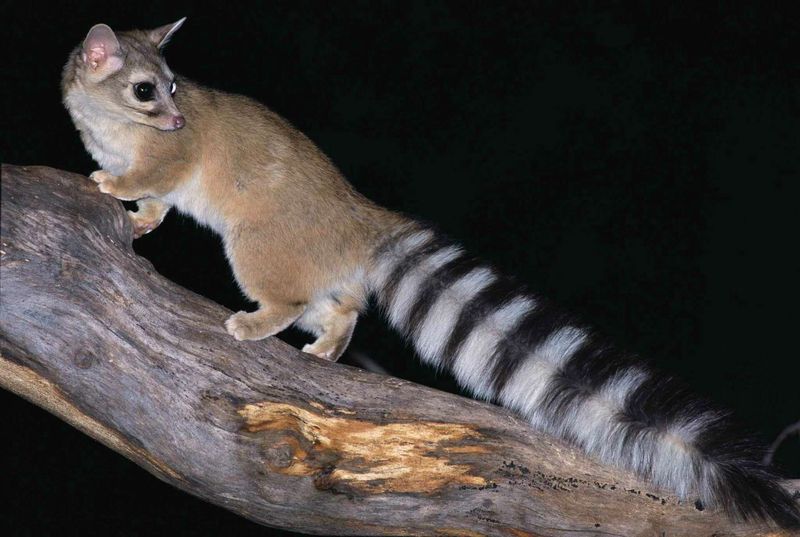
In the arid landscapes of the southwestern United States, a small, agile animal roams the rocky terrains. The Ringtail, often mistaken for a raccoon, is a member of the raccoon family, Procyonidae.
This nocturnal creature has a striking resemblance to its more famous cousin, featuring a long, bushy tail with black rings and expressive eyes.
Ringtails are solitary animals, primarily active at night, and are known for their incredible climbing abilities. They use their sharp claws and agile bodies to navigate rocky crevices and trees, hunting for insects, small mammals, and fruits.
Ringtails have a unique charm, marked by their ability to rotate their hind feet 180 degrees, which aids them in descending trees headfirst. This adaptability makes them skilled hunters and survivors in their harsh desert environments. Spotting a ringtail in the wild is a rare and delightful experience.
4. Raccoon Dog
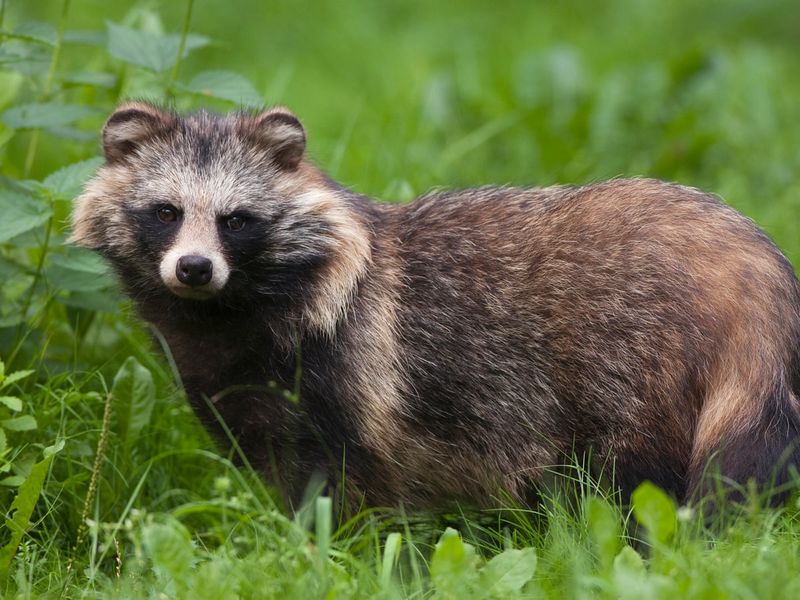
Across the dense forests of East Asia, a unique canine prowls, often mistaken for its masked raccoon counterpart.
The Raccoon Dog, native to this region, is a fascinating example of convergent evolution, sharing the raccoon’s distinctive facial features. Unlike raccoons, these animals belong to the canid family, closely related to foxes.
Raccoon dogs boast a thick, fluffy coat that provides insulation against harsh winters. They are omnivorous, with diets consisting primarily of insects, fruits, and small animals. Their adaptability to various habitats, from forests to urban areas, showcases their survival skills.
Despite their wild nature, raccoon dogs exhibit a playful demeanor, often seen frolicking in their environment. Their curious and cautious nature makes them a subject of interest among wildlife photographers and enthusiasts.
5. Olingo
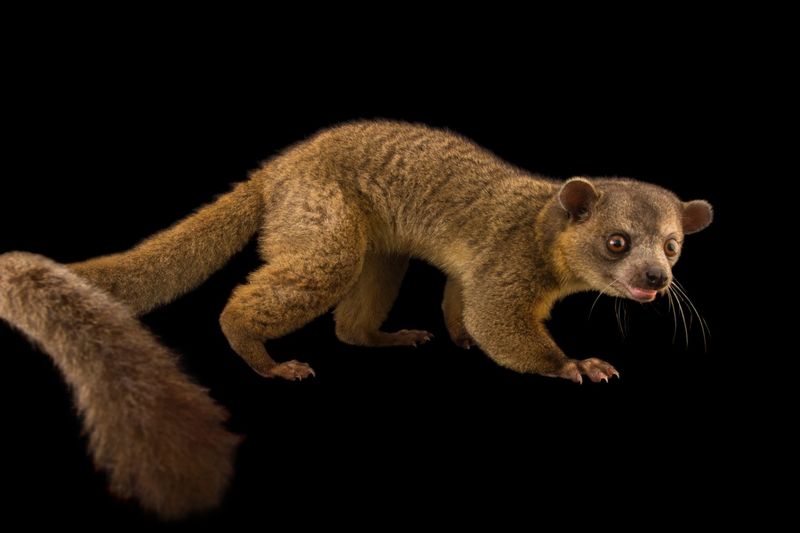
Amidst the lush canopies of Central America, a small, nocturnal mammal gracefully moves through the trees. The Olingo, often mistaken for a raccoon due to its masked face and bushy tail, belongs to the same family as the kinkajou.
These arboreal creatures are primarily frugivorous, with a diet rich in fruits and nectar.
Their slender bodies and sharp claws enable them to navigate the treetops with ease, spending most of their lives high above the ground. Olingos are social animals, sometimes seen in small groups, communicating with soft vocalizations.
The olingo’s role in the ecosystem as a seed disperser is crucial, aiding in the growth of various plant species.
6. Red Panda
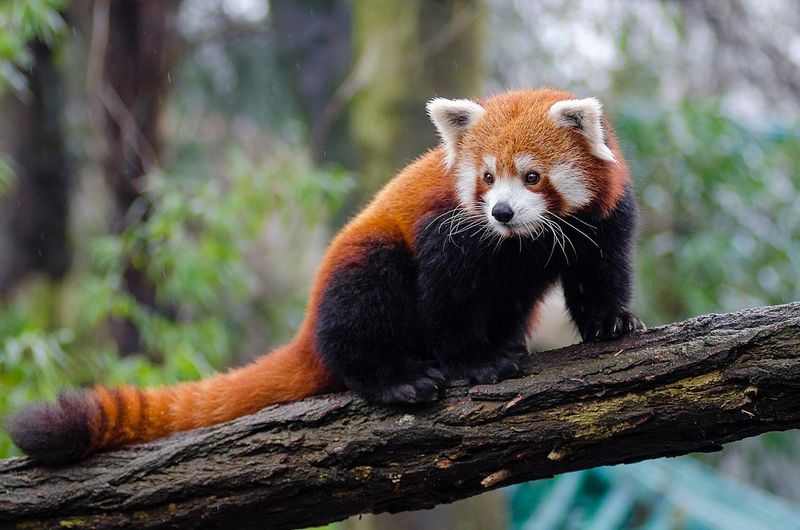
High in the Himalayan forests, a charming creature with raccoon-like features captures the imagination of all who see it. The Red Panda, often mistaken for a distant raccoon cousin, shares the raccoon’s distinctive ringed tail and masked face. However, red pandas are more closely related to weasels and skunks.
These solitary animals spend much of their time in trees, feeding on bamboo and other vegetation. Their thick, reddish-brown fur provides warmth in the chilly mountain climate, while their bushy tails aid in balance during tree climbing.
Red pandas are known for their gentle and curious nature, often observed playfully exploring their surroundings. Despite their appealing appearance, they face threats from habitat loss and poaching.
Conservation efforts are crucial to ensure the survival of these endearing animals, making them a symbol of wildlife preservation in the region.
7. Binturong
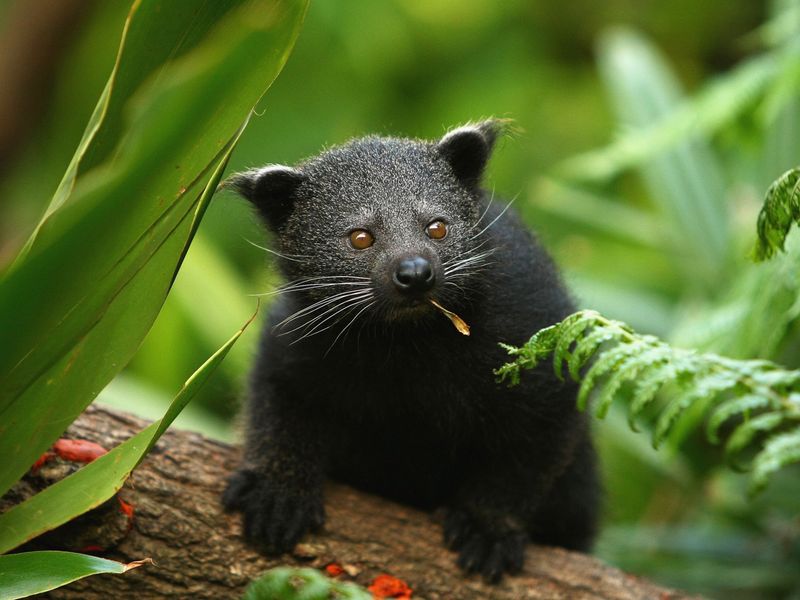
In the dense rainforests of Southeast Asia, an elusive creature with raccoon-like features leisurely lounges among the treetops.
The Binturong, also known as the ‘bearcat,’ possesses a distinctive appearance with its shaggy black fur and prehensile tail, which aids in tree climbing. Despite its resemblance to a raccoon, it is more closely related to civets and fossas.
Binturongs are omnivorous, with a diet that includes fruits, small animals, and bird eggs. Their slow, deliberate movements contrast with their playful nature, as they often engage in social interactions with other binturongs.
A unique trait of binturongs is their scent, which resembles that of buttered popcorn, marking their territory and identifying themselves to others.
8. Common Palm Civet
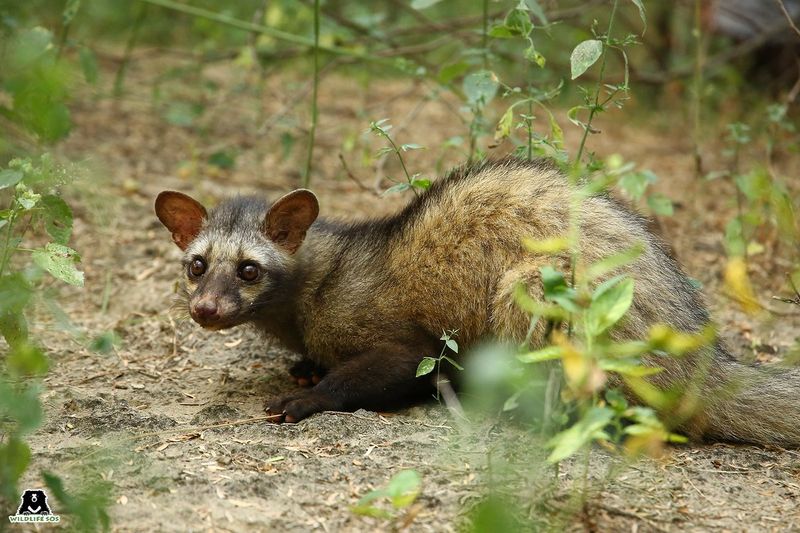
In the tropical forests of South and Southeast Asia, a nocturnal creature awakens, ready to explore its arboreal domain.
The Common Palm Civet, often mistaken for a raccoon, shares strikingly similar features, including a masked face and ringed tail. Despite these similarities, they are more closely related to mongooses.
These solitary animals are adept climbers, with sharp claws and flexible bodies that allow them to navigate tree canopies in search of fruits and small prey. Their diet plays a crucial role in seed dispersal, contributing to the growth of new plants.
Common palm civets are known for their secretive nature, communicating through a series of calls and scent markings.
9. Crab-Eating Raccoon
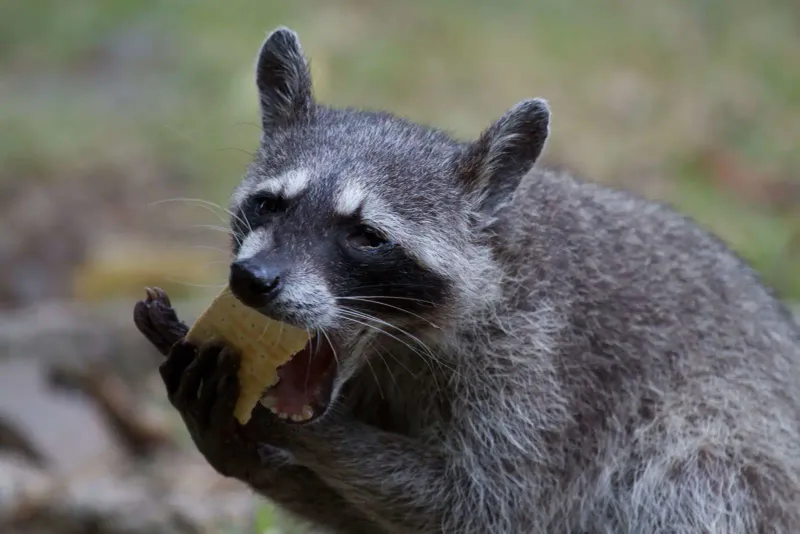
Along the riverbanks of Central America, a unique raccoon species thrives, known for its specialized diet.
The Crab-Eating Raccoon, while sharing the iconic mask and ringed tail of its relatives, is uniquely adapted to its environment, with partially webbed feet aiding in swimming and foraging in aquatic habitats.
These raccoons are highly skilled hunters, often catching crabs, mollusks, and small fish, showcasing their adaptability to diverse food sources. Unlike their urban-dwelling cousins, crab-eating raccoons are more reclusive, preferring the solitude of jungle rivers and coastal areas.
Their nocturnal nature and keen sense of touch make them effective foragers, exploring their surroundings with curiosity and precision.
Encountering a crab-eating raccoon in the wild offers a glimpse into the unique adaptations that allow this species to thrive in its watery world, highlighting the diversity of raccoon-like animals globally.


